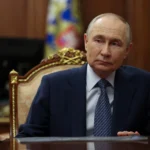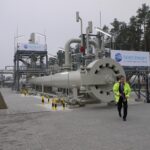Israel’s Economic U-Turn: How Growth Surged Ahead of the Gaza Ceasefire

Israel’s economy has staged a powerful and unexpected rebound, reversing months of disruption caused by the Gaza conflict and broader regional tensions. As negotiations advanced toward a ceasefire, the economy began accelerating at a pace that surprised many analysts, businesses, and policymakers. What had appeared to be a prolonged slowdown has transformed into one of the strongest short-term recoveries in recent years.
This resurgence—driven by revived consumer spending, restored labour capacity, improved investor sentiment, and renewed export activity—arrives just as Israel stands at a political and security crossroads. The rebound offers a new foundation of stability as the country enters the next stage of its post-conflict trajectory.
From War-Driven Contraction to Rapid Recovery
Throughout the height of the fighting, Israel’s economic activity was dragged down by widespread disruptions:
- tens of thousands of reservists absent from the workforce
- restricted access for Palestinian and foreign labourers
- businesses operating at limited capacity
- tourism and retail industries facing steep declines
- heightened uncertainty freezing investment decisions
Output fell sharply, and the economy slipped below its long-term growth trend.
Yet as the conflict’s intensity eased and a ceasefire gained momentum, the economic climate shifted quickly. Businesses reopened, labour flows resumed, consumer activity revived, and investors began adjusting their expectations upward. Within months, growth surged at an annualised pace that demonstrated remarkable resilience.
What’s Fueling the Rebound?
1. A Burst of Consumer Spending
After months of caution, households began spending again—on services, retail goods, leisure, dining, and domestic travel. The release of pent-up demand became a major driver of early-stage recovery.
2. Investment Reawakening
Companies that delayed projects during the conflict began committing capital once stability seemed within reach. Construction, high-tech, manufacturing, and energy projects restarted, helping rebuild the momentum in private-sector activity.
3. Labour Market Normalization
As reservists returned and worker flows improved, labour shortages eased dramatically. Sectors such as construction, agriculture, logistics, services, and manufacturing regained capacity that had been restrained for months.
4. Technology and Export Strength
Israel’s high-tech sector, a major engine of economic output, benefited quickly from reduced uncertainty and improved global conditions. Exports picked up as manufacturers and tech firms resumed full operations.
5. The Psychological Effect of Stability
Markets respond not only to data, but to expectations. The prospect of a ceasefire reduced risk premiums, boosted confidence, strengthened financial markets, and encouraged long-term planning across industries.
A Strong Quarter Reflecting Broad-Based Growth
The economic resurgence has been broad rather than narrow. Key indicators show:
- rapid expansion in consumer-facing industries
- rising exports after earlier disruptions
- improving business confidence
- firming labour participation
- a more stable inflation environment
- strengthening financial assets and currency stability
This combination reinforces the narrative of a true economic U-turn rather than a temporary bounce.
Why the Ceasefire Matters Economically
The ceasefire is functioning as a catalytic moment. Its impact is multidimensional:
Lower uncertainty
With reduced military activity, firms regain the ability to plan, hire, invest, and expand.
Restored connectivity
Trade, transport, tourism, and logistics re-open more fully as border and security disruptions decline.
Investor reassurance
Confidence rises when long-term risk appears more manageable.
Household stability
Reduced tension encourages families to resume normal economic activity, which is crucial in consumer-driven segments.
If the ceasefire endures, the economic benefits will compound. If it falters, progress could quickly reverse.
Caution Flags: Not All Headwinds Are Gone
Despite the strong rebound, several structural and mid-term challenges remain:
1. High Defence Spending
Even with a ceasefire, Israel’s security-related expenditures remain elevated, placing strain on long-term fiscal flexibility.
2. Labour Shortages Not Fully Resolved
Key sectors still face gaps, particularly where cross-border labour disruptions have not fully normalized.
3. Investment Hesitation in Sensitive Sectors
Some industries remain conservative in committing to long-term projects until the political horizon is clearer.
4. Risk of Future Escalation
The sustainability of growth is tied heavily to the durability of calm. Renewed conflict would dampen consumer activity, government planning, and investor appetite.
5. Global Economic Conditions
Israel remains exposed to slowdowns in global demand, high international interest rates, and external supply-chain constraints.
Regional and Global Implications
For Israel’s Economy
The rebound strengthens Israel’s standing as a resilient, technologically advanced economy capable of fast recovery. It helps stabilize the fiscal outlook and supports long-term development initiatives.
For the Middle East
A stronger Israeli economy contributes to regional trade, investment, and energy cooperation. Economic stability reduces spillover risks for neighbouring countries.
For International Investors
Israel’s swift recovery enhances its appeal across technology, defence, renewable energy, and infrastructure sectors. The country’s capacity to rebound from conflict is seen as a mark of economic durability.
Conclusion: A Turning Point With Opportunities—and Risks
Israel’s economic resurgence ahead of the Gaza ceasefire marks a defining moment. The country has demonstrated impressive resilience, regaining momentum just as political and security conditions begin to stabilize. Whether this becomes a sustained expansion or simply a strong short-term recovery will depend on policy choices, investor confidence, regional diplomacy, and the durability of peace.
For now, Israel stands at a rare intersection: rebounding from crisis while standing on the threshold of potential renewal. The path forward holds both challenges and opportunities—but the recent rebound has provided a foundation of strength that was far from guaranteed.



















